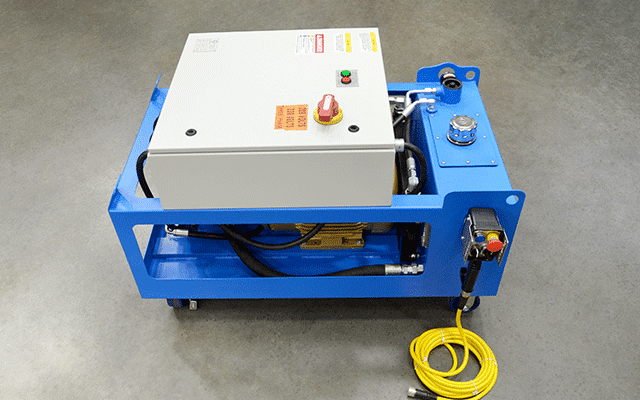Banks’ asset quality ‘may get dented’ as special schemes end: RBI report
The Indian financial system’s asset high quality enhanced inspite of the pandemic, but it could be owing to exclusive dispensations by the regulator, and banking institutions would very likely see greater worry on their textbooks the moment the strategies expire.
In accordance to the annual development and development report of the Reserve Financial institution of India (RBI) launched on Tuesday, the details available for this financial yr so significantly reveal that banks’ poor debts have moderated although provision coverage ratios (PCRs), capital buffers as very well as profitability indicators have enhanced relative to pre-pandemic degrees.
“A nearer seem at granular details, having said that, reveals a more nuanced image. Credit score growth is muted, indicative of pandemic scarring on aggregate need as also danger aversion of banking institutions. Banks’ asset high quality may possibly get dented, heading forward,” the central bank’s report claimed.
The gross non-accomplishing property in 2020-21 accounted for seven.three per cent of whole improvements, down from eight.two per cent the former yr. The provisional supervisory details implies a further moderation in the ratio to six.9 per cent by the stop of September 2021. “The enhancement was driven by reduce slippages, partly owing to the asset classification standstill.” General public sector banking institutions also documented web profits right after a gap of 5 decades.
The non-financial institution financial organizations (NBFC) sector, as well, “may have to grapple with better delinquency as and when coverage measures unwind,” the report claimed. The exclusive point out accounts (SMA) class has swelled in NBFCs as the dispensations come to a shut, the RBI famous.
Modest Finance Banking institutions (SFBs), meanwhile, have proven structural problems as they undergo from focus danger on equally sides of their harmony sheets. Hence, SFBs have to have to diversify their property as very well as their liability profiles. “The governance lifestyle in these banking institutions desires enhancement. Higher attrition degrees, specially at best ranks, have to have to be dealt with,” the report claimed.
The central financial institution claimed the pandemic brought about a change in the adoption of electronic technological know-how, cybersecurity, and frauds to all stakeholders including regulators and supervisors are rising as worries.
The report also warned of bigtech companies lending “either instantly or in partnership with regulated financial entities,” which could be hard to regulate, and can potentially destabilise the financial ecosystem and hamper the competition.
Payments banking institutions are currently facing this competition. Even as they are into essential banking solutions for the unbanked, they are “under frequent tension to innovate to sustain competitiveness, specially towards BigTech gamers.” As a consequence, their operational fees and investment decision desires are better than other segments of the banking sector, impacting their profitability.
The capital to danger-weighted property ratio (CRAR) of the banking program enhanced sequentially every quarter from the stop of March 2020 to achieve 16.six per cent at the stop of September 2021, driven by fresh new capital and better retained earnings. Banking institutions also managed their capital conservation buffer at two.five per cent.
Importantly, the range of banking institutions breaching the regulatory minimum amount prerequisite of CRAR (including capital conservation buffer) (10.875 per cent) declined to one all through 2020-21 from a few in the former yr.
Personal organizations have been web savers in the previous a few decades, growing their deposits with banking institutions, although their credit score offtake has remained anaemic. The domestic sector’s deposits, at sixty four per cent of the whole, also picked up pace.
The share of significant borrowal accounts, with publicity of Rs five crore or more, in whole improvements declined to fifty one per cent at the stop of March 2021 from 54.two per cent a yr in the past. Their contribution to whole NPAs also declined in tandem from seventy five.4 per cent to 66.two per cent all through the identical interval.
Nevertheless, the exclusive point out accounts-two (SMA-two) ratio, which indicators impending worry, has risen across financial institution teams since the outbreak of the pandemic.

Frauds in the banking program declined in 2020-21 to Rs one.38 trillion, from Rs one.85 trillion a yr in the past. Further, between April and September of fiscal 2021-22, banking sector frauds amounted to Rs 36,342 crore, in contrast with Rs sixty four,261 crore in the identical interval a yr in the past.
“An overpowering bulk of situations documented all through 2020-21 in terms of range and quantity involved linked to improvements, although frauds concerning card or web transactions designed up 34.six per cent of the range of situations.”
Importantly, “there was a marked maximize in frauds linked to non-public banking institutions equally in terms of range as very well as the quantity involved.”
In the initially 50 % of 2020-21, non-public banking institutions accounted for more than 50 % of the range of documented fraud situations. But the share of general public sector banking institutions continued to keep on being better, “indicating predominance of significant price frauds,” the RBI claimed.
The central financial institution electronic forex (CBDC) really should be created adequately prior to its introduction. Whether or not CBDC would be issued instantly by the central financial institution or by professional banking institutions, desires to be cautiously weighed.
“Given its dynamic effects on macroeconomic coverage generating, it is necessary to adopt essential designs at first, and check comprehensively so that they have negligible effects on monetary coverage and the banking program,” the central financial institution claimed.
For the Countrywide Asset Reconstruction Organization (NARCL) to realize success, pitfalls to banks’ harmony sheets really should be plainly discovered. There really should be transparent transfer pricing for sale of property and independence and professionalism of the administration of the new entity has to be ensured.
Local weather alter has also emerged as an “overarching concern” for the regulator.







